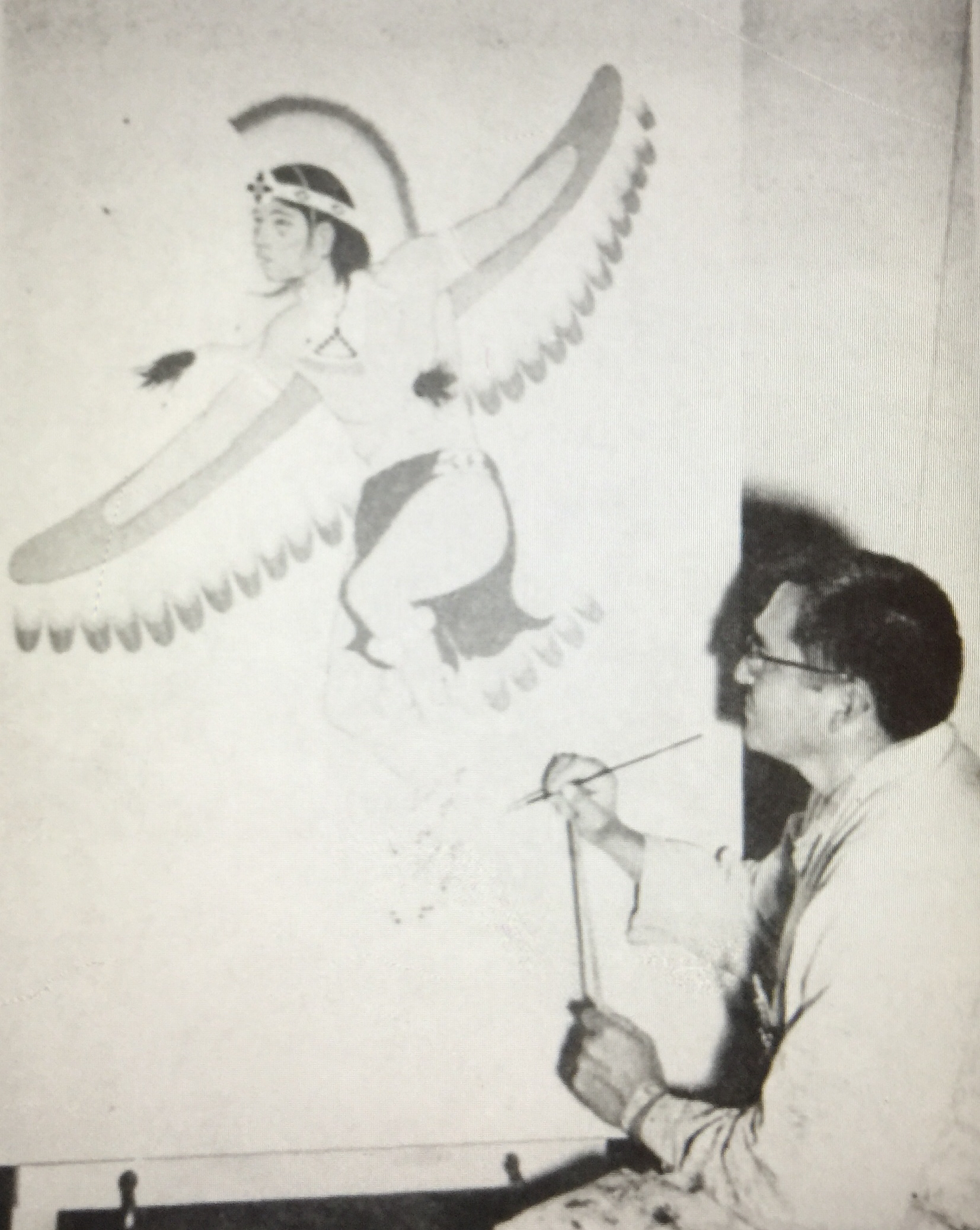He worked in Santa Fe from 1936 to 1938, the only Indian specializing in sculpture, and he also painted murals in Washington D.C for the Department of the Interior; Fort Sill, Arkansas; and Riverside, California. As a painter, he did the official portrait of Stuart Udall, Secretary of the Interior and Apache Chief Geronimo for the Arizona State Capitol Building in Phoenix.
During World War II, he was a factory hand and ditch digger in California. In 1948, he won a scholarship to the Haskell Institute in Kansas, followed by a Guggenheim Fellowship. There he did his first large sculpture, Comrades in Mourning. Carved from marble, it is eight-feet tall and weighs four and a half tons and remains at the Institute.
From 1951 to 1975, he taught art in Indian Schools, and also served as instructor at the Institute of American Arts. The Phoenician Hotel in Scottsdale, Arizona, has one of the largest collections of his sculpture.
He worked in Santa Fe from 1936 to 1938, the only Indian specializing in sculpture, and he also painted murals in Washington D.C for the Department of the Interior; Fort Sill, Arkansas; and Riverside, California. As a painter, he did the official portrait of Stuart Udall, Secretary of the Interior and Apache Chief Geronimo for the Arizona State Capitol Building in Phoenix.
During World War II, he was a factory hand and ditch digger in California. In 1948, he won a scholarship to the Haskell Institute in Kansas, followed by a Guggenheim Fellowship. There he did his first large sculpture, Comrades in Mourning. Carved from marble, it is eight-feet tall and weighs four and a half tons and remains at the Institute.
From 1951 to 1975, he taught art in Indian Schools, and also served as instructor at the Institute of American Arts. The Phoenician Hotel in Scottsdale, Arizona, has one of the largest collections of his sculpture.















